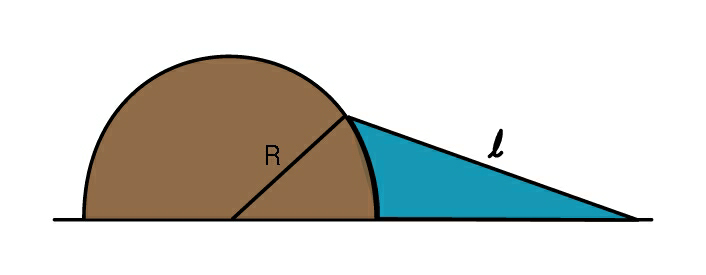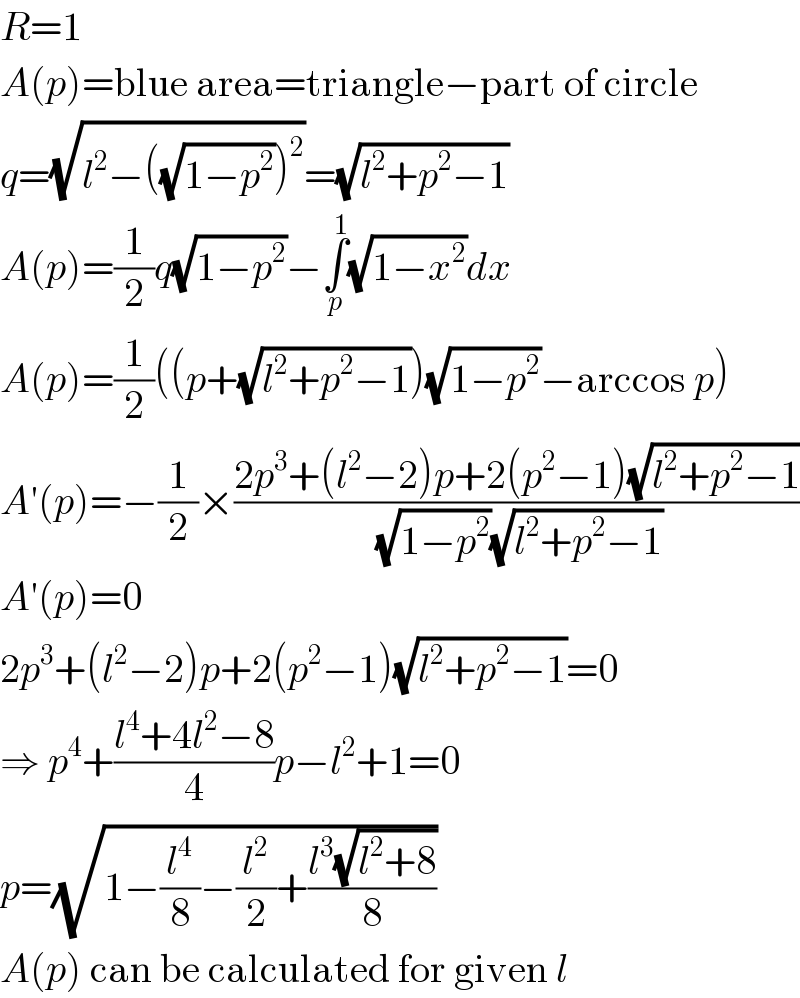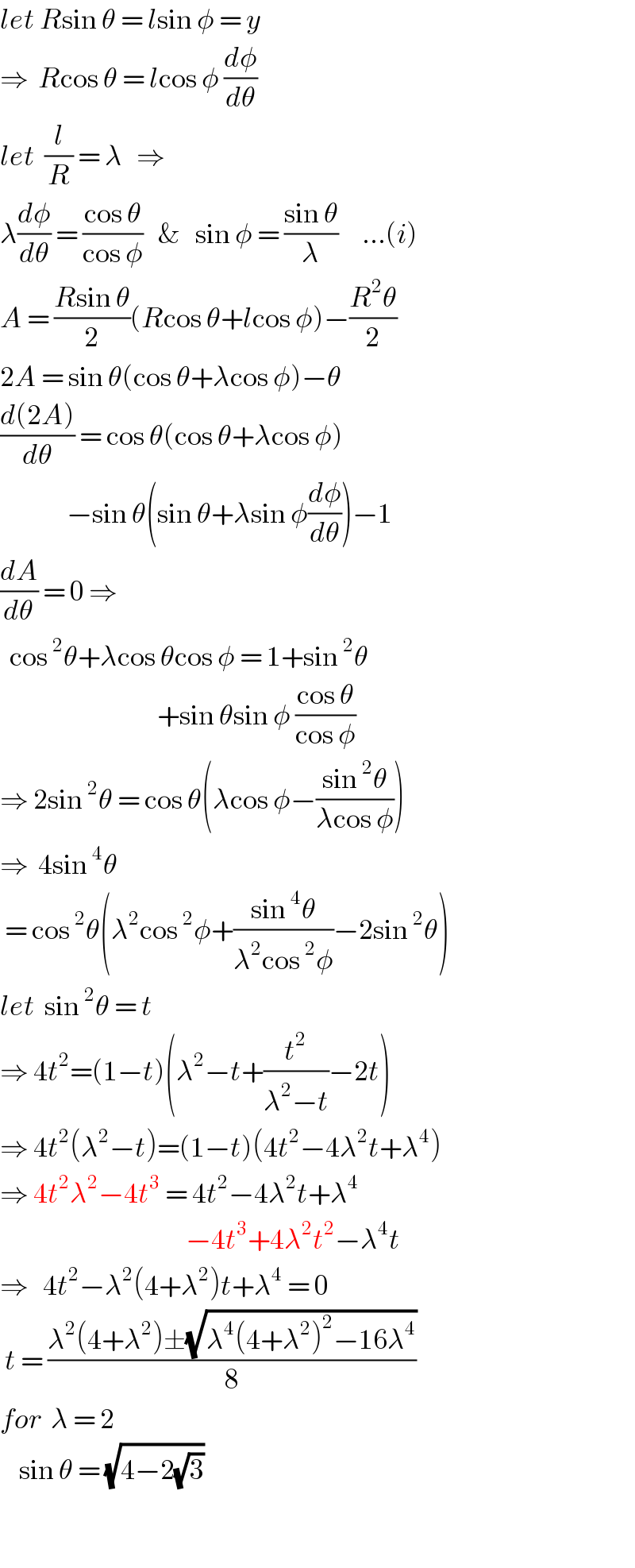
Question and Answers Forum
Question Number 49877 by ajfour last updated on 11/Dec/18

Commented by ajfour last updated on 11/Dec/18

Answered by mr W last updated on 12/Dec/18
![((sin α)/R)=((sin θ)/l) ⇒sin α=(R/l) sin θ=((sin θ)/λ) cos α (dα/dθ)=(1/λ)cos θ A_(blue) =((Rl)/2) sin (α+θ)−((R^2 θ)/2) A=(R^2 /2)[(l/R) sin (α+θ)−θ] A=(R^2 /2)[λ sin (α+θ)−θ]=(R^2 /2)f(θ) f(θ)=λ sin (α+θ)−θ ((df(θ))/dθ)=λ cos (α+θ)((dα/dθ)+1)−1=λ cos (α+θ)((1/(λ cos α)) cos θ+1)−1=0 ⇒cos (α+θ)(((cos θ)/(cos α))+λ)−1=0 ⇒(cos α cos θ−sin α sin θ)(((cos θ)/(cos α))+λ)−1=0 ⇒(cos θ−tan α sin θ)(cos θ+λ cos α)−1=0 ⇒(cos θ−((sin^2 θ)/(√(λ^2 −sin^2 θ))))(1+((√(λ^2 −sin^2 θ))/λ^2 ))−1=0 ⇒θ=..... with λ=2/1=2,⇒θ=47.06°⇒A=0.5199](Q49882.png)
Commented by ajfour last updated on 11/Dec/18

Answered by MJS last updated on 11/Dec/18

Commented by ajfour last updated on 11/Dec/18

Commented by MJS last updated on 11/Dec/18

Commented by mr W last updated on 12/Dec/18

Answered by ajfour last updated on 12/Dec/18

Commented by ajfour last updated on 12/Dec/18

Commented by mr W last updated on 12/Dec/18

